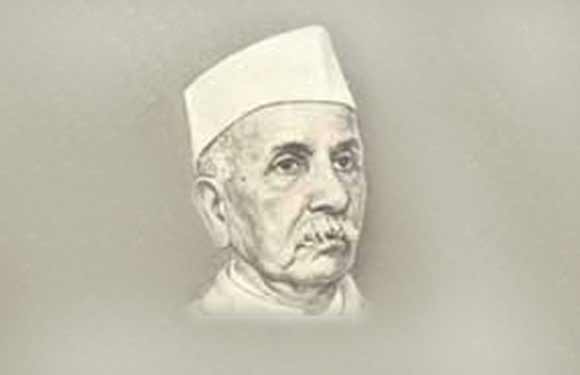Excitement of this kind is quite rare in the publishing industry. The last came a few years ago when Random House took over Penguin. And now this Amazon buyout of Westland has given the industry an interesting conversation beginner. Amazon had signaled their intent in February this year when they acquired a minority stake in Westland from Tata-Trent. It was known at that time itself that Amazon was not on this deal for a minority stake. Those who read the deal closely knew that at some point in time, Amazon would take over the company. That it would happen so soon (within six months of the initial acquisition) no one really anticipated.
The acquisition can only be good for Westland. They move from being owned by Tata Trent – someone who can at best be called “a reluctant owner” – to someone who would want to grow Westland into a premier publisher, maybe one of the largest in India. Westland will now get the investments that they have always had to fight for, often in vain. And they will get the muscle to compete in the market and dominate. Till now they have dominated because they have had big names publishing with them. Now they will dominate because they will have scale, money, publishing bandwidth and most importantly Amazonian muscle power. However the fact that a publishing house that boasts of some of the biggest names in the industry should get sold twice in a matter of a few years, is a question in itself.
Whenever such a high profile acquisition happens in any industry, the industry should introspect and do some soul searching. Ask itself some questions. No one is asking those in the publishing world today. Maybe they are, but these are points that are seldom talked about. For they involve commerce. Money. And talking blatantly about money in publishing is ‘just not done”.
Is publishing a business? Well, for some, it surely is. For the writer, it may be an art (or craft as some would say), but for the publisher, it is surely a business. No one is in it for love and fresh air. Yet, in publishing, no one makes ‘enough’ money. They key word being ‘enough’. Publishers keep complaining that they don’t have money for advances, marketing spend, acquiring new titles etc. etc.. Authors are the quintessential bottom of the pyramid category (at least in their minds, they are). Distributors never stop cribbing. Bookstores have gone a step further and downed shutters. So where is all the money going? First of all, is there as much money as people make out to be. Time to do a reality check.
Any business becomes attractive if
* there is an opportunity to scale up
* the business is profitable
* the valuations in this space are attractive and
* the business provides some other intangible benefits like recognition, stature, status etc. to the promoters.
Let’s see how the trade publishing (fiction/non-fiction English-language publishing) in India stacks up on all these.
Scale
In a country of 1.2 billion people, one would expect serious scale. India has one of the largest English speaking populations in the world. Hence it is not unreasonable to expect publishing to be a big business. When we talk of publishing top line in India, a lot of numbers are thrown around. Rough estimates put the total turnover of the Indian publishing industry at Rs 26,000 Crores. Sadly that is a very misleading number for most of it pertains to academic books / education related publishing. Publishing of education related books is an extremely fragmented (over 9,000 publishers), low margin and corruption-prone industry.
Trade publishing (Fiction / Non-fiction / Non-Academic Publishing) in English, on the other hand, constitutes a minuscule portion of this. Big Daddy of trade publishing, Penguin Random House has a post-merger top line of Rs 190 crores (or thereabouts). This includes all streams of revenue – local publishing, international publishing, distribution of other publishers books and door to door sales. The second biggest player, Harper Collins is at an estimated topline of Rs 120 crores. For Harper, this even includes direct to school sales. And then there is a wide chasm. Hachette which is normally at around Rs 30 crores p.a topline is expected to close this year at Rs 45 crores, thanks to one book – Harry Potter and the Cursed Child.
Rupa & Aleph combine at Rs 35-40 crores (thanks to Chetan Bhagat) is next and then comes Westland at Rs 20 crores. Pan, Bloomsbury, Scholastic, Roli books, Shrishti etc. are all below Rs 20 crores in topline. (These numbers are pure guesstimates based on industry interactions)
Nielsen Quarterly report pegs the book sales in the July-Sept 2016 Qtr ar Rs 144 Crores. This is what consumers/readers paid for the books sold in this period. If we assume a uniform sales throughout the year and extrapolate this quarterly sale of 144 Cr., it would translate to an Annual sales figure of 576 Crores for English language books. Nielsen numbers represent only 50% of the market. So a rough estimate of total sales would be Rs 1,152 crores.
This Rs 1,150 Crores, which the customer pays gets shared between the retailer, distributor and the publisher. Typically 2/3rd of this goes towards the publisher’s topline. All this translates to the Publishing Industry topline of Rs 750 crores.
A trade Publishing (English language fiction/non-fiction, non-educational books) market of $110 million is hardly anything to write home about. Have you ever wondered why bestselling International authors (except maybe Jeffrey Archer) don’t have India on their book promotion circuit? The answer lies in scale – or lack of it.
Is there an opportunity to scale up? On paper…. YES. But in reality, the needle has not moved much over the years. Book sales have stagnated over the years.
Profitability
Publishers lose money on most books published in India. 20% of the books published pay for the 80% of the books that don’t make money. Well, this is true for most industries. But the key difference in Publishing is that the 20% of the books that make money, don’t make so much money that the publishers end up rolling in gold.
For most multinational publishers, and even some of the local ones, a high percentage of revenues (at times even higher than 70%) are based on international imports. Losses on account of forex fluctuation often come into play. The high costs of distribution and marketing of books eat into the profitability. And what kills it is the fact that the publishers never get paid on time. They get their payment often six months after the books have been shipped to the distributors. And invariably these days books are sold to distributors on a returnable basis. Which means that after six months, the distributor has the right to return his unsold stock and only pay for what he has managed to sell. And then, of course, there is inventory carrying costs, logistics, printing costs etc, which are becoming expensive by the day. And we are not even talking about fixed costs, office rentals, staffing costs etc.
Pricing of books has also not kept pace with the rising expenses. When my first book If God was a Banker came out in 2007, it was priced at Rs 195 and the publisher top line was roughly Rs 137 a book. (Discounts to retailers were quite reasonable those days). Today the book is priced at Rs. 295 and the publisher revenue for every book sold are Rs 148 (approx). An increase of 11 Rupees a book does not even cover inflation.
Publisher Topline (in Rs) Net Profits (in Rs)
PRH 190 Crores 15-18 Crores
Harper Collins 150 Crores 12-14 Crores
Rupa 35 Crores 3-4 Crores
Westland 20 Crores 1.5-2 Crores
Real profit numbers aren’t that high and its a cash out business for the most part for publishers. End of the day, a publisher typically ends up making 6-8% of his revenue as profits. Let’s see how that translates for the big four of publishing.
To put things in perspective, Penguin Books came to India in 1987, Harper Collins in its various forms has existed for long in India. Rupa just completed its 80th year in existence and Westland started in 1962 (as East-West Publications.. though their serious foray into publishing started some 11-12 years ago). If after all these years in existence, this is the kind of money the publishers make, it does tell a story.
The money that SRK or Salman Khan make in one movie is more than what the top five trade publishers put together to make in one year. Well, the story is tragic.
The only publishers who seem to be making money these days, are the publishers who are into self-publishing…most of whom (not all) are just glorified printers. For the sake of this post, I am ignoring the self-publishing industry.
Valuations
Well, this is where everything culminates. How can one expect high valuations in an industry that has low profitability and limited opportunity to scale up? Amazon bought Westland for Rs 40 Crores (inclusive of an amount paid in February 2016). That translates to a valuation of 2 times topline. Isn’t that a pittance for a company that is over five decades in business and boasts of publishing some of the biggest authors in India.
If we were to apply the 2X valuation yardstick to other publishers ; a PRH would be worth Rs 400 Crores, Harper Rs 300 Crores and RUPA Rs 70 Crores.
For businesses which are as old as these publishing houses are, for an industry which brings together the intellectual powerhouse of the nation, for an industry that defines and documents cultures, this is a pittance.
This low growth and lack of valuation in this industry bring to fore another challenge. The industry does not attract investments. PE funds stay away from traditional publishing. Hence all growth has to be necessarily funded by internal accruals. Yes, in the past, there have been multiple investments by Everstone and IFC in S Chand & Co, but that is on the back of a solid Education Books publishing business. Juggernaut too was started with the backing of Nandan Nilenkani and a few others, but I am sure they invested in Chiki Sarkar whose aura and reputation more than compensate for the less attractive publishing business. Lack of valuations is also forcing new players from staying away from this industry.
In any industry that does not attract new players or investment, innovation takes a back seat. That is what is happening to our publishing industry today. (notwithstanding the efforts of Juggernaut)
Recognition
At least one publisher in private conversations has expressed the desire to walk away from this trade. The same publisher also expressed frustration at being unable to do so, for the business has given him an identity, a recognition, which any other trade would not give the publisher. This is a fact. Publishers enjoy a stature in a society which professionals from other industries don’t have. They enjoy access to powerful people, celebrities, and wield an influence which not many can boast of. This can be addictive. But this can’t be the only reason why anyone remains in publishing.
Publishing as a business cannot justify its existence if one were to look at pure commercials. There are better ways for businesses to make the money that publishing does. There are easier ways to build valuations much higher than those prevalent in the publishing business.
I agree that publishing gives wings to a passion. It supports an art, which is divine in more ways than one. It helps define cultures. It helps generations broaden their perspectives and live life differently. It employs a number of people directly and indirectly and hence supports society. All of these can’t be measured in terms of money alone. But somewhere deep down, I feel that unless we figure out a way to make the entire publishing ecosystem richer we are fighting a losing battle.
All this boils down eventually to one number : Sales. If we figure out a means to increase revenue for the publisher. Everything will fall into place. Profit numbers will go up, Valuation of publishing houses will go up, more investors will flock to this space, publishing houses will be able to pay more to attract talent, create more job opportunities, publish more books, there will be more authors, more people will take to writing, bookstores will be back in business… overall the ecosystem will benefit. Wouldn’t that be wonderful? And the only way to do this is to get more people to buy books and read. Enlisting the support of authors and asking them to champion the cause of reading may not be a bad idea.
Publishers are very happy to support in case anyone has a good idea. My own experience in this has been fabulous. A few months back, I along with a couple of like-minded friends went to the publishers with one such initiative – Enchantico (www.enchantico.in) …. the first book subscription box for kids in India. It is an initiative very close to my heart, aimed at getting young children in the age group of 5-12 yrs to read. An initiative aimed at putting the fun back into reading. An initiative aimed at weaning kids away from gadgets and rekindling their interest in books and reading. When I went to publishers with this initiative, almost all of them jumped at the idea and have supported it wholeheartedly. We have reached a level where we put a smile on the faces of hundreds of children every month. The smile that children have on their faces when they read interesting books is a huge motivator. I hope and pray that these young children who take to reading, or further their reading interests through Enchantico, continue this passion throughout their life.
We need hundreds of such initiatives to get more people to read. There is no other solution to the problems that plague the publishing business.
The price at which Amazon acquired Westland has brought this issue to the fore. What we lack in India is not quality writing, is not talent, is not intent, is not ability…. it is Scale. And till we fix it, nothing will and nothing can change.
Let’s just hope when people talk about the Indian trade publishing industry a few decades from now, they don’t begin by saying, “Once upon a time….”
The writer is an award-winning author of seven bestselling books. This article is taken from his blog.
Recent Articles on M&A
Source: Business-Standard




